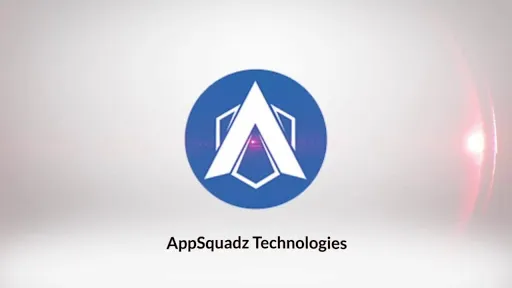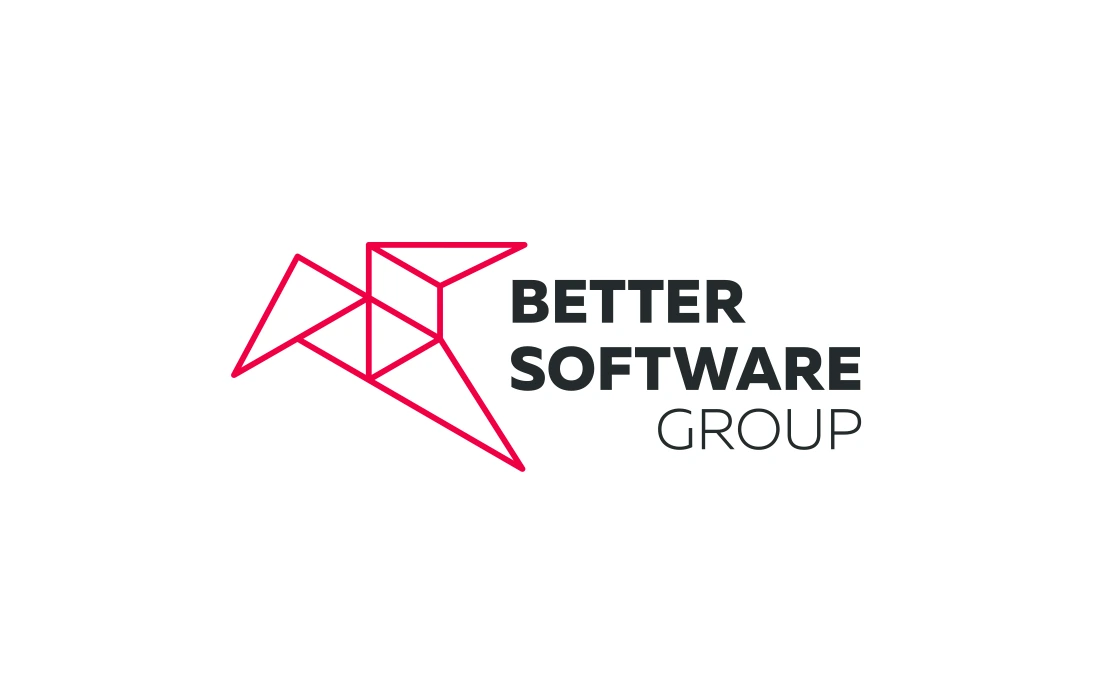React Native is one of the best frameworks that has transformed the mobile app development industries worldwide. The framework has achieved a new rise in popularity among the various industrial verticals such as startups, SMEs, and big giants.
Do You Know?
Appbrain stated that over 30000 apps are using React Native.
Instagram, Bloomberg, Skype, Facebook Messenger, SoundCloud Pulse, Uber, Salesforce, and more are famous companies using React Native.
Picking React Native for mobile app development can help you build a leading application. But in order to make effective use of the framework, you should hire React Native developers from the Best React Native App Development Company.
I know that now your mind must be having a question about how to choose a top React Native company. Well, to make your work easy and answer your question here, I have mentioned the list of the 7 best React Native app development companies’ names.
Parameters Considered for Choosing The Best Ones
For listing the best React Native app development company names, I have considered various parameters that are:
- Companies years of experience
- Number of satisfied clients
- Number of successfully delivered projects
- Clients rating at various platforms like Clutch, Good firms, Glassdoors
- Workfolio and more
Top React Native App Development Company
Based on the stated parameters here, I have listed the 7 top React Native app development companies. The company names which I have listed here, hold offshore React Native app experts that proffer innovative solutions to their clients, also assure to offer 100% client satisfaction.
1) ValueCoders (Best React Native App Development Company)
ValueCoders is the top-rated React Native app development company assisting startups, SMEs, and giant enterprises. The organization maintains healthy relationships with patrons that help the company make a good reputation in the market. This company globally holds 2400+ satisfied clients. Since 2004 ValueCoders has been serving high-quality React Native solutions to clients.
The organization renders outstanding IT solutions, which include Software Development, Mobile and Web Development, Artificial Intelligence (AI), React Native app development, Offshore Software Development, IT Strategy & Consulting, and so on. ValueCoders is the best React Native App Development Company in India to hire dedicated React Native app developers; you can choose this company if you are planning to build React Native apps.
Utilize our affordable and scalable React Native solutions designed to fit your business needs.
KeyPoints of ValueCoders
- 19+ total Domain Experience.
- 500+ dedicated and skilled employees
- 4200+ projects globally
- Hourly Pricing < $25 / hr
- At Clutch ValueCoders got a 5.0/5 rating
- ISO 9001 and NASSCOM-certified company
- Key clients: RiskLogic, Dubai Police, Candor, Capgemini
2) PixelCrayons (React Native App solution providers)
PixelCrayons is one of the best React Native app development service providers. The company was organized in 2004and is serving 38+ countries. For several years the organization has served various industrial verticals such as healthcare, eCommerce, banking, and more that’s why it has received good clients review at GoodFirms, Glassdoors, etc. The developers of this company can handle small, moderate, and big projects.
PixelCrayons proffers appreciating IT services those are eCommerce Solutions, Mobile App Development, Software Development Services, Blockchain Development, React Native solutions, DevOps Solutions, Machine Learning Services, Hybrid App Development, and so on.
KeyPoints of PixelCrayons
- 19+ years of total Domain Experience
- 500+ dedicated employees
- Launched 13800+ projects
- Hourly rate: $12-30/hr
- Got 4.79/5 rating at GoodFirms
- Reputed Patrons: eBay, Citigroup, Kraft Foods, Adobe
Related Blog: 10 Custom App Development Companies To Seek
3) Konstant Infosolutions
Konstant Infosolutions is the exceptional React Native app development corporation that offers diverse IT services to startups, SMEs, and brands. By rendering exceptional services to clients, the company earned gratitude in the market. This company was organized in 2003, and since then it has delivered several projects to various industries like retail, e-commerce, finance & payment, etc.
Services provided by this Konstant Infosolutions: Web Design, iPhone/iPad Applications, PHP/.Net Development, Magento eCommerce Solutions, WordPress Design & Development, OpenSource Application Development, Android App Development, Mobile Web Design.
KeyPoints of Konstant Infosolutions
- 6+ years of experience
- 180+ employees working
- 2500+ delighted clients
- Hourly rates: $25
- At GoodFirms the organization got 4.93/5 stars.
- Clients: Project Action Star, RawBank, Scholastic, Stanley, Citrix
Also Read: Software Innovation Starts Here
4) WPWeb Infotech
WPWeb Infotech is a trusted and innovative React Native app development company known for delivering high-performance cross-platform mobile applications. Since its inception, WPWeb Infotech has built a solid reputation for developing scalable, secure, and feature-rich mobile solutions tailored to diverse industry needs including healthcare, education, e-commerce, fintech, entertainment, and more.
The team at WPWeb Infotech includes expert React Native developers who leverage modern tools and frameworks to ensure smooth performance and seamless UI/UX across iOS and Android platforms. Their agile development process, transparent communication, and commitment to client satisfaction have made them a go-to partner for businesses worldwide. WPWeb Infotech continues to set a benchmark in the React Native ecosystem by delivering apps that combine performance, flexibility, and a delightful user experience.
Services Offered by WPWeb Infotech: React Native App Development, iOS & Android App Development, Custom Mobile App Development, UI/UX Design & App Prototyping, API Integration & Backend Development, App Testing, Support & Maintenance
Key Points of WPWeb Infotech:
- 8+ years of experience in Mobile and web development
- 150+ skilled professionals
- 80% client retention rate
- Hourly rate: $25 / hr
- Successfully delivered 500+ mobile and web projects
- Got 5/5 rating at Clutch and GoodFirms
5) Sunflower Lab (Good App Development Company)
The organization is named React Native app development established in 2010. Sunflower Lab offered 95% of customer satisfaction. You can hire React Native app developers from this company as its expertise knows how to manage the projects in a good manner.
Services provided by Sunflower Lab are Prototyping, App development, iOS Development, App design, WordPress Development, Magento Development, Android Development, Product Management, React Native solutions, Quality Assurance, UX.
KeyPoints of Sunflower Lab
- 9+ years of experience
- 200+ devoted employees
- Completed 200+ projects
- Hourly rates $50
- Got 4.93/5 rating at GoodFirms
- Got top software development agency certification.
Related Blog: Top 10 Mobile App Development Companies That Innovate Unique Solutions
6) Hidden Brains (Dedicated react native app, Developer providers)
It is one of the recognized IT sector companies; additionally, I can say that it is the foremost React Native app development company too. Since 2003 the company has been serving small to big enterprises, and it presents chief solutions. This company holds 2000+ patrons across 103 countries. You can choose this organization to Hire React Native app coders as this company’s developers offer innovative ideas.
Outstanding services offered by Hidden Brains: Mobile Application Development, Web Development, Graphics & Multimedia Solutions, Game Development, React Native app solutions, Embedded Solutions, Enterprise IT Solutions, and more.
KeyPoints of Hidden Brains
- 16+ years of Domain Experience.
- 500+ knowledgeable employees
- Launched 5000+ Web projects.
- Hourly rates: $25
- Got a 4.99/5 rating at GoodFirms
- Awarded by ICTIS Global Industry & Academic Excellence Award 2017
- Happy customers: McAfee, INCENTRA, Maxtor
7) Appsquadz
Appsquadz is one of the famous React Native app development organizations founded in 2014. In a very little time, the company gained a lot of name and fame in the market. The offshore React Native App Programmers of the company grant innovative solutions to various industries such as retail, education, e-commerce, travel, healthcare, and so on.
Appsquadz offers various services such as iPad App Development, iPhone App Development, Android App Development, React Native App Development, Windows App Development, iOS Apps Development, Mobile App Development, etc.
KeyPoints of Appsquadz
- 5+ years of experience.
- 200+ expertise
- 74% of clients retention rate
- Developed and launched 650+ apps
- Career Points, DAMS, are key clients of the corporation
8) Smart Sight Innovations (offshore React Native App Programmers)
Smart Sight Innovations is the principal React Native app development company founded in 2014. By offering a robust software outsourcing company to the customers in such a small time, it has attained appreciation in the market. The dedicated React Native developers of this company always try to abandon the projects on time.
Services Provided by Konstant Infosolutions: CRM, E-Commerce, SAP HANA, Mobile Apps, React Native app service, Big Data, Customized Web Application, SEO, and so on.
KeyPoints of Smart Sight Innovations
- 5+ years of total experience.
- More than 50 developers working
- Got 5.00/5 rating at GoodFirms
- Top-rated web design & development companies list achieved 23rd rank.
9. LITSLINK
It is one of the excellent React Native app development companies serving since 2014. It has a well-qualified team of experts that boast many years of experience in the industry. The company has a solid portfolio and is known for its creativity. It offers the highest level of service possible at an affordable rate.
Services provided by LITSLINK: IT Outsourcing, IT development, DevOps, Research, Business Consulting, IT team extension services, Marketing consulting, Machine Learning (ML), App Development, iOS app development, Android app development, Web Development, and more.
Key Pointers of LITSLINK
- 5+ years of experience
- Got 4.8/5 stars at Clutch
- Hourly rate: $50 — $99 / hr
- Clients: Mush Limited, Scarpa Wine, Toolook Inc.
10. GeekyAnts
GeekyAnts is another one of the best React Native app development companies founded in 2016. It has a team of proficient developers who are known for their efficient work. It provides the highest level of service at an affordable rate. The company is known to deliver quality results on time, and it offers unlimited revisions after each project’s completion until the client is satisfied with the end result.
Services provided by GeekyAnts: Web Development, React, React Native, Node.Js, iOS/Android app development, Javascript, Artificial Intelligence (AI), Vue.js, Flutter, and so on.
Key Pointers of GeekyAnts
- 12+ years of experience
- Got 4.8/5.0 stars at Clutch
- Hourly rate: $25 — $49 / hr
- Clients: Siveco Romania, Google LLC, Tellius, ChildMind Institute
Let ValueCoders utilize React Native to build robust apps that reach a wider audience.
11. Iterators
Iterators is the top-rated React Native app development company that includes proficient developers who are very well known for their creativity and effectiveness in work. The company provides an innovative solution to your business problems and is known for its quick response.
Services provided by Iterators: Data Analytics, Statistics, Agile, Software Testing, mobile app, Agile, IOS, Android, Data Analytics, WBENC, Web development, iOS and Android app development, App Maintenance, etc.
Key Pointers of Iterators
- 4+ years of experience
- Hourly rate: $50 — $99 / hr
- Got 4.8/5 stars at Clutch
12. UppLabs LLC
UppLabs is a U.S based and one of the top React Native app development companies established in 2014. The corporations are very well known for their expertise in the industry and are considered to be one of the best. It provides high-quality, cost-effective services that allow individuals or companies to achieve success within a few years.
Services provided by UppLabs LLC: Mobile app development, Web development, IoT solutions, IT solutions, Cross-platform app development, Artificial Intelligence, Wearable devices, and more.
Key Pointers of UppLabs LLC
- 6+ years of experience
- Hourly rate: $25 — $49 / hr
- 150+ deployed projects
- Got 4.8/5.0 stars at Clutch
Also Read – From Idea to Launch: The Ultimate Guide to App Development
13. Prismetric
It is a leading React Native app development company with world-class expertise in the field. It has been around for over a decade and continues to lead from the front, making it one of the most trusted names out there. The company offers high-level and unique solutions within budgeted timeframes as per the client’s requirements.
Services provided by Prismetric: Opensource Development, iOS App Development, Asp.net Development, Android App Development, Mobile Game Development, IoT App Development, Software Development, Java development, Windows Phone Application Development, and more.
Key Pointers of Prismetric
- 10+ years of experience
- Hourly rate: < $25 / hr
- ISO 9001:2015 Certified company
- Key clients: Peugeot, Coca-Cola, Singapore Post, Chase Bank
14. Credencys Solutions Inc.
Another highly reputable React Native app development company with over ten years of experience in the market. This corporation is known for its commitment to excellence and delivering high-quality results on time. It has a team that includes only experienced professionals who are committed to satisfying their clients.
Services provided by Credencys Solutions Inc.: Product Information Management (PIM), Digital Asset Management (DAM), Digital Commerce Platform, Mobile App Development (iOS & Android), Web Application Development, Enterprise Mobility Solutions, Cloud Solutions, Enterprise Software Solutions, React Native, etc.
Key Pointers of Credencys Solutions Inc.
- 11+ years of experience
- Hourly rate: $25 — $49 / hr
- Key clients: Unilever, Samsung, Cisco, McDonald’s, ABB, Raytheon, ITC
- 600+ projects delivered successfully
15. Hedgehog Lab
Hedgehog Lab is also one of the top React Native app development companies serving since 2007. The firm includes proficient developers that can handle different projects simultaneously for several clients. The corporation is known for its creativity and renders quality results, which can be further enhanced after each project’s completion until the client is satisfied with the end outcome.
Services provided by Hedgehog Lab: iPhone development, Mobile development, Android development, Mobile Strategy, Smart tv apps, iPhone apps, Virtual reality, Augmented reality, and more.
Key pointers of Hedgehog Lab
- 10+ years of experience
- Hourly rate: $100 — $149 / hr
- Clients: LaserShip, Leisure Pass Group, E.ON Energy, AkzoNobel
16. GoodWorkLabs
GoodWorkLabs is one of the top React Native app development companies in Bengaluru, India. It was founded in 2006 and has since grown to be a reliable partner for many businesses around the world. The organization has a team of experienced and talented professionals offering a wide range of solutions to its patrons.
Services provided by GoodWorkLabs: Games Development, Enterprise Software Development, Offshore Software Development, Mobile Apps Development, UX / UI Design, Android & iPhone App Development, Big Data, Java, Ruby on Rails, Website development, and more.
Key Pointers GoodWorkLabs
- 7+ years of experience
- Hourly rate: $50 — $99 / hr
- Clients: Avaya, Sesame Street, Medtronic, JDA, Siemens
- Member of NASSCOM
Trust ValueCoders to create scalable React Native apps that enhance your business performance and user satisfaction.
17. Ready4S
It is one of the top React Native app development companies. The organization includes skilled professionals who are proficient in React Native development. The corporation proffers high-end services at a very reasonable rate. Moreover, the firm has completed more than 200 projects.
Services provided by Ready4S: Body leasing, Java, Objective-C, JavaScript, MySQL, Swift, PHP, HTML, React Native development, development CSS, C#, Parse, MVP, Agile, UX/UI, web app development, IoT, AI, serverless, Node.js, MongoDB, Mobile app development, and more.
Key Pointers of Ready4S
- 8+ years of experience
- Hourly rate: $50 — $99 / hr
- 250 successful projects
- Clients: La Roche Company, Uber, Credit Agricole, Coca-Cola
18. Innofied
Innofied is the best React Native app development company. The company offers expert services at a fair price. Moreover, React Native app developers renders creative ideas and quality work.
Services provided by Innofied: IT Outsourcing, App Development, React Native app development, Objective-C, JavaScript, MVP, UX/UI, web app, IoT, AI, Serverless, MongoDB, DynamoDB, Hadoop, and more.
Key pointers of Innofied
- 10+ years of experience
- 450+ app delivered
- Got 4.9/5.0 stars at Clutch
- 300+ happy clients
19. Mindgrub Technologies
It is one of the top React Native app development companies. Mindgrub Technologies includes a team of proficient React Native app developers who have vast knowledge in mobile application development and web technologies too. The company provides business-centric solutions which ultimately help businesses boost ROI.
Services proffered by Mindgrub Technologies: Content Management Systems, Social Media Integration, Rich Internet Applications, Virtual Reality, Mobile Gaming, iPad Development, Digital Marketing, Marketing Automation, Search Engine Optimization (SEO), Email Marketing, and more.
Key pointers of Mindgrub Technologies
15+ years of experience
Got 4.8/5.0 stars at Clutch
Hourly rate: $100 — $149 / hr
Member of the Inc. 5000
Our cost-effective solutions ensure that you get the most out of your investment while delivering top-notch app functionality.
20. Theodo
This organization is very famous for its React Native app development offerings. You can hire React Native app developers from Theodo to create any kind of mobile app, even the highly advanced React Native mobile apps. Moreover, the company provides an attractive client support service to the clients.
Services provided by Theodo: Digital transformation consulting, UX/UI design services, JavaScript, Node.JS, Angular, DevOps, React Native app development, Application web, Vue.js, Nuxt.js, Serverless, and more.
Key pointers of Theodo
- 8+ years of experience in the market
- Clients: Made, AXA, Euler Hermes
- 500+ projects delivered
21. Better Software Group
It is one of the top-notch React Native app development companies. Additionally, the organization has a team of efficient developers who are brilliant in their respective fields. The development team of the organization can handle small to big level projects in a very simple and agile way.
Services provided by Better Software Group: iOS Development, UX/UI Design, Mobile App Development, Android Development, Smart TV, Android TV, OTT Platforms, TV App Development, Integration Services, Roku Development, Broadcast Media, and more.
Key pointers of Better Software Group
- 8+ years of experience
- Hourly rate: $50 — $99 / hr
- Clients: Polskie Radio, Travelplanet, SkyCash, Goldenline
Have a look at the video for a quick demo:
Conclusion
React Native is one of the ideal frameworks that every developer wants to use in app development. Here In this blog, I have listed the Top React Native app development company names. The named company React Native app development solutions are of high quality that makes businesses sound like a pro.



























